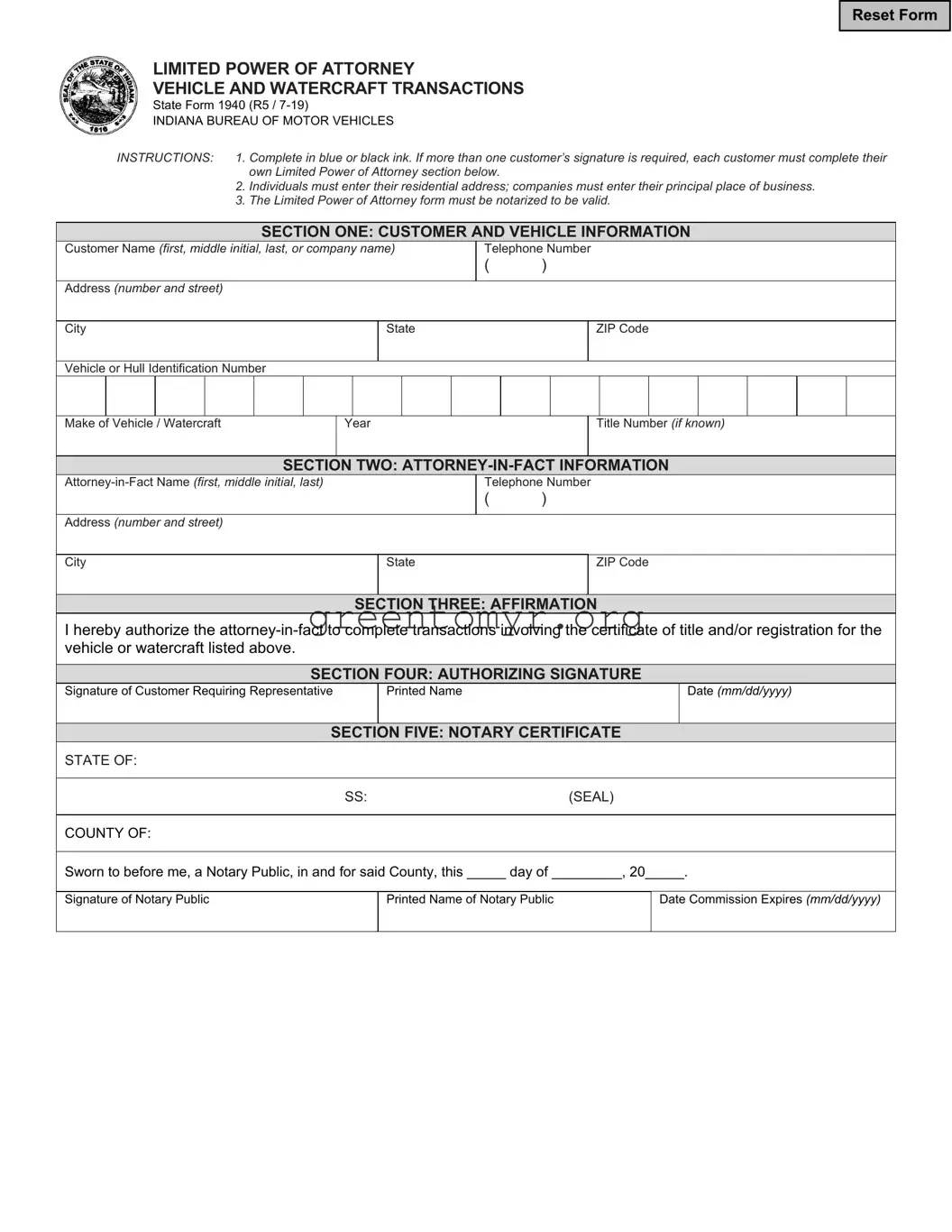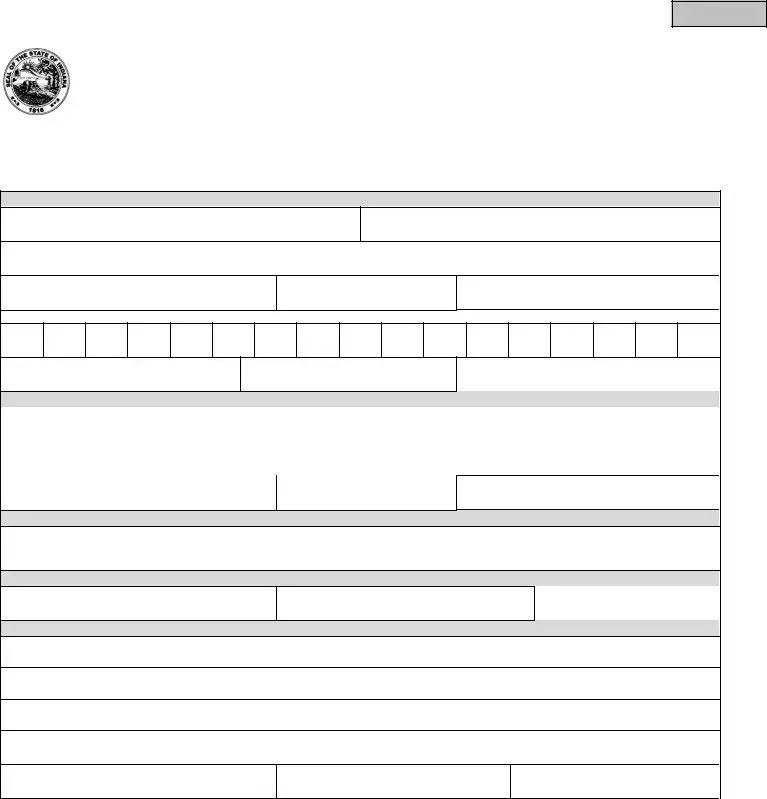The Vehicle Power of Attorney (POA) form 01940 is a legal document that allows an individual to designate another person to act on their behalf in matters related to a specific vehicle. This includes tasks like transferring ownership, registering the vehicle, or obtaining duplicate titles. It is particularly useful for those who may be unable to handle these tasks themselves due to time constraints or other reasons.
This form is ideal for anyone who owns a vehicle but may be unable to manage related paperwork personally. Common users include:
-
Individuals traveling out of state or country.
-
Those with medical issues that restrict their ability to go to the DMV.
-
People who need to sell or transfer a vehicle but cannot be present to sign the necessary documents.
Filling out the Vehicle POA form 01940 is straightforward. Follow these steps:
-
Print the form from a reliable source or obtain it from your local DMV.
-
Fill in your name and the name of the person you are designating as your attorney-in-fact.
-
Provide specific details about the vehicle, including its make, model, year, and Vehicle Identification Number (VIN).
-
Sign and date the form; this is crucial for its validity.
Make sure all the information is accurate to avoid potential issues during vehicle transactions.
In many instances, notarization is not required. However, some states may have specific rules regarding the notarization of POA documents. It is advisable to check with your local DMV or legal entity to determine whether notarization is necessary in your case.
The validity of the Vehicle POA form 01940 usually lasts until the designated tasks are completed or until you revoke the authorization. If you provide a specific timeframe in the document, it will be valid only for that duration. If you no longer wish for your attorney-in-fact to have these powers, you can cancel the POA by notifying them and, if necessary, submitting a revocation form to the relevant authorities.
Filling out the form incorrectly can lead to complications in vehicle transactions. Common issues may include:
-
Rejections during the title transfer process.
-
Legal disputes over the vehicle's ownership.
-
Delays in registration or obtaining important documents.
To avoid these issues, double-check all entries and ensure that all required fields are filled out accurately.
Yes, you can revoke the Vehicle POA form 01940 at any time, as long as you are of sound mind and the revocation is executed in accordance with state laws. It is best to put the revocation in writing and communicate this to your attorney-in-fact. Sending a copy to your local DMV can also help to clarify the change in authority.

